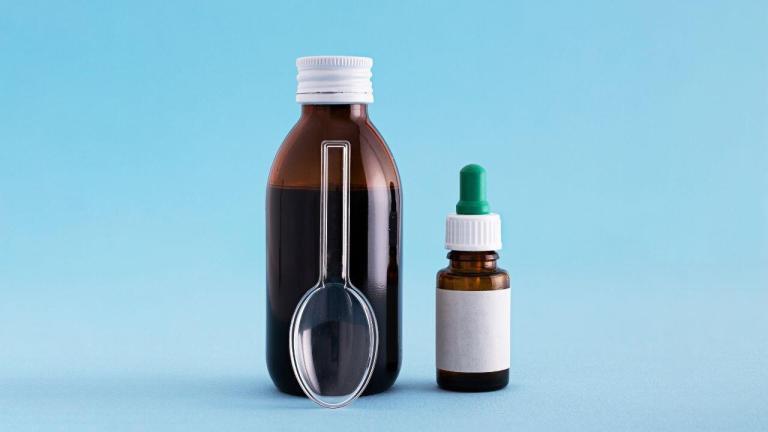
Oral Films represent a groundbreaking advancement in pharmaceutical technology, offering a novel approach to drug delivery that combines convenience, efficacy, and patient compliance. As a versatile and discreet alternative to traditional oral dosage forms, OTFs are rapidly gaining traction in the healthcare industry.
Their unique properties allow for the quick dissolution and absorption of medication, providing an innovative solution for patients with swallowing difficulties and those in need of immediate therapeutic action. This article explores the various aspects of OTFs, including their types, advantages, suitable drugs, market trends, and future prospects.
What are Oral Films?
Oral Thin Films (OTFs) are innovative drug delivery systems that consist of thin, flexible films containing active pharmaceutical ingredients (APIs). Oral films are designed to dissolve quickly in the mouth, either on the tongue, under the tongue (sublingual), or inside the cheek (buccal), providing a convenient and discreet way to administer medication.
OTFs offer several advantages over traditional dosage forms, such as improved patient compliance, especially for those with swallowing difficulties, rapid onset of action, and the ability to bypass the digestive system, which can enhance drug bioavailability. They are particularly beneficial for pediatric, geriatric, and bedridden patients, as well as those who require fast-acting medication.
The manufacturing process of OTFs involves the careful selection of polymers, plasticizers, and other excipients to ensure optimal drug release, stability, and patient acceptability.
Which Drugs Can Oral Films Deliver?
Oral Thin Films are best suited for delivering active pharmaceutical ingredients that meet certain criteria to ensure effective absorption and patient comfort. These APIs typically have the following properties:
- High Potency: The drugs should be effective at low doses, as OTFs have limited space for incorporating large amounts of active ingredients. High potency ensures that a therapeutic effect can be achieved with a small quantity of the drug.
- Pleasant Sensory Profile: The APIs should not cause an unpleasant feeling or taste in the mouth. This is important for patient compliance, as an unfavorable taste or sensation can deter patients from using the medication as prescribed.
- Low Molecular Weight: Drugs with low molecular weight are more readily absorbed through the mucous membranes of the mouth or the gastrointestinal tract. This property is crucial for the rapid onset of action and efficient delivery of the drug into the bloodstream.
- Stability and Solubility in Saliva: The APIs should be stable and soluble in saliva to ensure that they can be effectively dissolved and absorbed when the OTF is placed in the mouth. Solubility in saliva is particularly important for drugs that are absorbed through the oral mucosa.
Currently, most OTFs on the market contain small-molecule, water-soluble drugs that meet these criteria. However, advancements in OTF technology are expanding the range of suitable APIs, including efforts to deliver larger molecule drugs and those that are water-insoluble. As research and development in this area continue, the scope of drugs that can be effectively delivered via OTFs is expected to broaden, offering new possibilities for drug delivery and patient care.
Types of Oral Films for Drug Delivery
Oral Thin Films have emerged as a versatile and innovative drug delivery system, offering a convenient and efficient alternative to traditional oral dosage forms like tablets and capsules. OTFs are particularly advantageous for patients who have difficulty swallowing or require rapid onset of action. They can be broadly categorized based on their placement in the mouth and the method of Active Pharmaceutical Ingredient delivery. The primary types of OTFs include Buccal Films and Sublingual Films.
Buccal Films
Buccal films are designed to adhere to the inner surface of the cheek or lip. This placement allows for the gradual release of APIs across the mucous membrane, directly into the bloodstream. By bypassing the digestive system, buccal films reduce the risk of degradation of the API by gastric acids and enzymes, thus preserving the drug’s efficacy. Additionally, this route of administration minimizes the first-pass metabolism in the liver, which can further enhance the bioavailability of the drug.
Buccal films are particularly useful for drugs that require rapid absorption into the systemic circulation. They are also beneficial for patients who cannot swallow pills, such as those with dysphagia, or for those who need medication administration in situations where swallowing is not feasible, such as during a migraine attack or in a post-operative setting.
The manufacturing process of buccal films involves the creation of a thin polymer matrix that contains the API. This matrix is designed to be mucoadhesive, ensuring that the film remains in place for the duration of the drug release. The film’s composition is carefully formulated to control the release rate of the API, ensuring a consistent and predictable therapeutic effect.
Sublingual Films
Sublingual films are another category of OTFs, designed to be placed under the tongue. This area of the mouth is highly vascularized, allowing for rapid absorption of the API into the bloodstream. Sublingual films offer the advantage of quick onset of action, which is crucial for conditions that require immediate relief, such as angina or anxiety attacks.
Unlike buccal films, sublingual films do not adhere to the mouth tissues. Instead, they disintegrate quickly in the presence of saliva, releasing the API for absorption. This mode of delivery is particularly suitable for drugs that are not stable in the gastrointestinal tract or are poorly absorbed through the digestive system.
Sublingual films can be further categorized into two subtypes based on the absorption pathway of the API:
- Orally Dissolving Films (ODFs): In ODFs, a portion of the API is absorbed directly through the mucous membranes of the mouth, providing rapid onset of action. The remaining API is swallowed with saliva and absorbed in the gastrointestinal tract. This dual absorption pathway can be advantageous for drugs that require both immediate and sustained release.
- Orally Disintegrating Films (ODFs): ODFs are designed to disintegrate rapidly in the mouth, with the entire API being absorbed in the gastrointestinal tract. This type of film is ideal for patients who have difficulty swallowing but do not require the rapid onset of action provided by direct absorption through the mouth.
Here’s a table summarizing the differences between Buccal Films and Sublingual Films:
| Feature | Buccal Films | Sublingual Films |
| Placement | Inner surface of the cheek or lip | Under the tongue |
| Adhesion | Designed to adhere to mucous membranes | Do not adhere; disintegrate in saliva |
| API Release | Slow release across the mucous membrane | Rapid disintegration and release |
| Absorption Pathway | Directly into the bloodstream | Primarily in the GI tract, with some direct absorption for orally dissolving films |
| Bypass Digestive System | Yes, bypasses the digestive system | Partially, depending on the type of film |
| Onset of Action | Fast, but generally slower than sublingual films | Very fast, suitable for immediate relief |
| Application | Suitable for sustained release and medications that need to bypass the digestive system | Suitable for quick relief and medications that are rapidly absorbed |
| Patient Comfort | May cause some discomfort due to adherence | Generally well-tolerated due to rapid disintegration |
Advantages of Oral Thin Films
Oral Thin Films offer several advantages as a drug delivery system, making them an attractive alternative to traditional dosage forms such as tablets and capsules. Some of the key advantages include:
- Improved Patient Compliance: OTFs are easy to administer and do not require water for swallowing, which is particularly beneficial for patients who have difficulty swallowing (dysphagia) such as children, elderly, and bedridden patients. The convenience and ease of use can lead to better adherence to medication regimens.
- Rapid Onset of Action: OTFs are designed to dissolve quickly in the mouth, allowing for the rapid absorption of the active pharmaceutical ingredient (API) into the bloodstream. This is especially useful for conditions that require immediate relief, such as pain or anxiety.
- Bypassing the Digestive System: OTFs can deliver drugs directly into the bloodstream through the mucous membranes of the mouth, bypassing the digestive system. This avoids the degradation of the API by gastric acids and enzymes, and reduces the first-pass metabolism in the liver, potentially increasing the bioavailability of the drug.
- Precise Dosing: OTFs can be manufactured with a high degree of accuracy, ensuring consistent and precise dosing of the API. This is important for drugs with narrow therapeutic windows.
- Discreet and Portable: OTFs are small, lightweight, and discreet, making them easy to carry and use in various settings without attracting attention. This can be particularly advantageous for patients who need to take medication at work or in social situations.
- Enhanced Stability: The manufacturing process of OTFs can protect the API from environmental factors such as light, oxygen, and moisture, enhancing the stability and shelf life of the product.
- Versatility: OTFs can be formulated with a wide range of APIs, including those that are not suitable for oral administration in other forms. They can also be designed to release the drug in a controlled manner, providing sustained or delayed release as required.
- Improved Taste: Flavoring agents can be incorporated into OTFs to mask the taste of bitter or unpleasant APIs, improving the overall sensory experience for the patient.
The Current and Future Oral Thin Films Market
The Oral Thin Films market has experienced significant growth and is expected to continue expanding in the coming years. The market was estimated to be valued at USD 3.01 billion in 2024 and is projected to reach USD 4.75 billion by 2029, with a compound annual growth rate (CAGR) of 9.56% during the forecast period (2024-2029).
The COVID-19 pandemic had a noticeable impact on the OTF market. Individuals with conditions such as schizophrenia and migraine, which are associated with a higher risk of mortality from COVID-19, contributed to an increased demand for OTFs. These films are an effective treatment option for such conditions, offering a convenient and rapid drug delivery method.
The primary drivers for the growth of the OTF market include the rising prevalence of target diseases and the numerous advantages offered by thin film drug delivery systems. For instance, the global population of individuals living with Parkinson’s disease exceeded 10 million in 2021, with around 1 million cases in the United States alone. The aging global population is expected to further increase the incidence of Parkinson’s disease and other age-related conditions, fueling the demand for OTFs.
Closing Thoughts
As we look ahead, the future of Oral Thin Films appears promising, with ongoing research and development poised to expand their applications and enhance their capabilities. The roadmap for OTFs includes the exploration of new formulations, the integration of advanced technologies for improved drug delivery, and the expansion into new therapeutic areas.
As the market continues to grow, we can anticipate the emergence of more sophisticated OTF products tailored to meet the diverse needs of patients worldwide. With a focus on innovation and patient-centered care, OTFs are set to play a pivotal role in shaping the future of pharmaceuticals, offering a more efficient, convenient, and accessible approach to medication administration.







